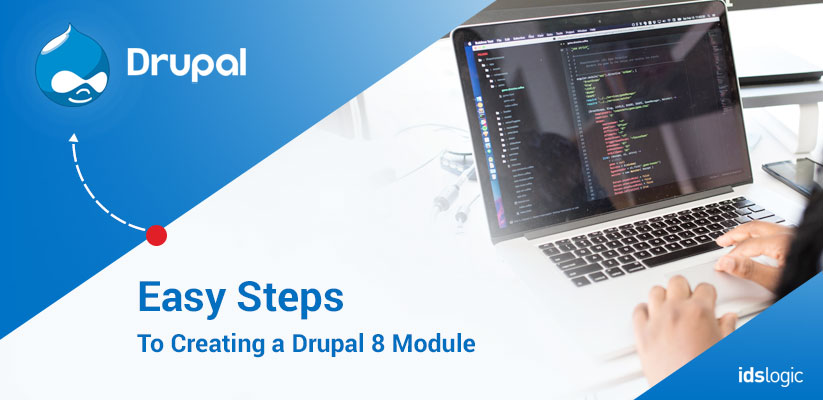
Easy Steps to Creating a Drupal 8 Module
Drupal 8 has come up with various new features and updates and it is very clear that the developers at Drupal are working to make it all the more awesome and simpler. With the release of the version 8, the coming days would be exciting for the developers as well as the users.
The biggest advantages of CMSs like Drupal are that they help the users to create websites easily without having to depend too much on coding. But the real power lies in creating customized modules that can specifically serve your business needs.
How to Make Your Own Customized Module Using the Latest Version of Drupal
Give a Name to Your Module:
The first step towards creating your Drupal module development is to decide the name of the module.
Usually in Drupal, we give the module a machine name and Drupal will identify it by the name given.
Remember that this name is quite different from the name that is usually seen by the user. Before giving a name, you should remember some of the following things:
- You should not use any spaces between the words
- The name should not start with any uppercase letter
Drupal 8 has a clean folder structure and all the modules will be placed in the MODULE folder. So, create a hello-world folder here and this will serve as the machine name for the module that you are creating and it will also contain all the essential files for the module to function.
Now Create the Drupal Module yaml File:
The parameters for your module should be set. This includes the title and the description of the module. The keys will be defined in the file hello-world.info.yml.
Drupal 8 uses the YAML. The name will show the title of the module, the type will tell Drupal that we are making a module, the description will describe what the module is about, the package will show the category under which the module will be listed and lastly the core will tell Drupal that it is compatible with Drupal 8.x core.
Create the Routing File:
The next step is about creating a routing file for the module. This file is used by the controller to know the URL path that the module’s function will execute. So, the name of your file will be hello-world.routing.yml.
The path will be used to access the module. The controller is the method that Drupal will call in order to process a request to our path. And the permission will ensure that only users who can access the content can see the Hello World page.
Create the Directory for controller:
The next step is to create a new subdirectory under the module folder that will hold the controller file. All the external plugins, controllers and etc. are placed under this directory.
All the controllers and external plugins will be placed under this director and the name is src which is the short for source.
So create a folder with the name src under your module’s root directory and then create a new folder under it and name it Controller.
Now Create the Controller File:
We will then create the controller file that will control the functionality of the module. But remember that the name is relatable so that it can easily be identified. In this case, we have the name HelloWorldController.php.
Check if the Module Functions:
This is the last step. You can now login to your Drupal site and then enable the module in case it is not done. you can test, if it functions properly and also visit the path that you specified in the routing file. In case you get the “page not found” error, then clear the cache. Recheck to find if it is functioning properly.
Also Read: Drupal 8 vs Umbraco: A Comparison Based On The CMS Features